|
|
|
The Historic
Hippodrome |
|
... and Clubs Handy, Ebony, Paradise, Tropicana |
|
|
|
|
|
From the early 1950s Memphis had become a "hot spot" for
Black Music. There was the all-black WDIA radio
station and new studios which recorded black musicians.
Plus there was talk of a "new kind of music".
Talented black musicians began moving into the city, and
famous black entertainers were eager to perform or record
here. With segregation in force, there were few
places where they could perform, and even fewer hotels
where they could stay. This opened the door to new
clubs in the city, several of which became historically
important on the "Chitlin' Circuit".
*
|
 |
| |
The Hippodrome dancers
|
|
|
|
|
|
|
| |
|
Click on small photos to
enlarge them. |
|
|
|
|
| |
|
|
|
|
|
|
|
The HIPPODROME
... 500 Beale |
|
|
 |
The
Hippodrome was an old skating rink run by Mary and "Big Foot"
Johnson. It was located at the east end of Beale, between
the Hunt-Phelan home and First Baptist Church. When the
skating rink began to decline, the owners turned the space into
a one-night stand facility - open for blacks only. The
capacity was 5,000 to 6,000.. and it was always packed.
And the history began... although it seems that the
performers at the theatre were photographed but everyone forgot to take a photo
of the building? |
|
The Hippodrome
|
|
|
| |
 |
 |
 |
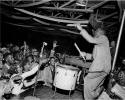 |
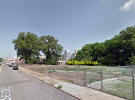 |
|
Ruth Brown |
1953 Gay Paree Formal |
1959 Fashion Show |
Lionel Hampton |
500 Beale
Street |
|
| |
|
|
|
|
|
By
1952 Memphis was established as a black music hotspot and Black
musicians were recording major hits here. The Hippodrome,
originally a roller skating rink, had begun having rhythm and
blues shows in the late 1940s. Famous artists were eager
to visit Memphis and perform. Among those who performed at
the Hippodrome were Johnny Ace, Billie Eckstine, Ruth Brown,
Count Bassie, B. B. King, Louis Jordan, Lionel Hampton, Fats
Domino, Howlin' Wolfe, Lionel Hampton, and the Ink Spots.
The Hippodrome figures prominently into
The
Chitlin' Circuit tours
*
and was the launch pad for Rock 'n' Roll. |
 |
| |
Johnny Ace |
|
| |
|
|
|
|
|
|
|
|
|
CLUB EBONY
... 500 Beale |
| |
 |
In 1955, the Hippodrome was purchased by Andrew "Sunbeam"
Mitchell and he changed the name to Club Ebony.
Later, under new owners it became the "Hippodrome" again, and
around 1961 Johnnie Currie ran the club for several years.
The demise of this club is not recorded. It just seems to
have faded away. The building has now been
demolished. |
 |
 |
|
King -
Mitchell |
|
Ebony Poster |
Ebony Ad |
|
|
|
|
|
|
|
|
|
|
|
|
* The Chitlin'
Circuit ? During
the years before the Civil Rights movement, segregated American
cities helped give birth to a touring circuit that provided
employment for hundreds of black musicians. This movement
eventually brought about rock 'n' roll music.
The "Chitlin Circuit" is the collective name given to performance
venues throughout the eastern, southern, and upper midwest areas of
the United States that were safe and acceptable for African American
musicians, comedians, and other entertainers to perform in during
the era of racial segregation in the United States. |
|
|
|
   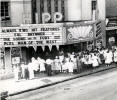   |
|
     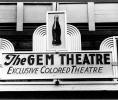 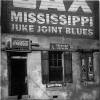 |
|
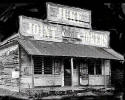       |
|
|
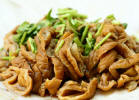 |
For
those who don't know, chitlins (chitterlings) are the
innards—the intestines—of pigs; distinguishable from tripe,
which is the stomach lining of pigs or cows. During the
ante-bellum period the leftovers of slaughtered pigs, including
the intestines, were given to slaves on plantations throughout
the American South. It was, in part, a survival mechanism and
pure improvisational genius, that centuries later chitlins are
the epitome of Soul Food, appearing on the menus of highbrow
gastro-pubs and available in grocery stores, cleaned and
de-odorized. |
|
|
|
|
|
|
|
|
|
|
|
| CLUB
HANDY ... 195
Hernando at Beale |
| |
|
In
1944 Andrew "Sunbeam" Mitchell opened the Mitchell Hotel in a
famous building on the corner of Beale and Hernando.
Originally built in 1896, it had been the Battier's Drug
building and for many years afterward the Pantaze Drug building.
Mitchell's hotel became known as the "Leading Colored Hotel of
Memphis". The hotel was located on the 3rd floor. The 2nd
floor was occupied by the Domino Club with an entrance at 195
Hernando. In the late 1940s, Mitchell changed that name to
Club Handy and it became the last club on Beale to book headline
acts. |
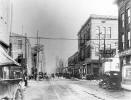 |
| |
1906 Battier
Drugs |
|
|
|
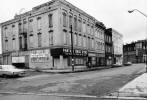 |
Many
Blues Musicians called the Mitchell "Home". Sunbeam and
Ernestine's place on Beale became the place for musicians to
hone their skills. The club was on the 2nd floor of their
restaurant-hotel at 195 Hernando. They named it Club Handy
and it became a major stop on the "Chitlin' Circuit" and
attracted big names. It's no secret that a lot of
musicians who were not well off, would entertain the crowds here
for their room and board. |
|
1970 Pantaze -
Mitchell |
|
|
|
|
|
|
|
|
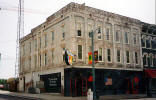 |
The big names that played Club Handy were Nat "King" Cole, Count
Basie, Muddy Waters, Little Richard, B. B. King, Bobby Bland,
Dizzy Gillespie, Sonny Boy Williamson, and Johnny Ace.
Even Elvis Presley performed here during his early years.
Today the Pantaze-Mitchell building on Beale has been renovated
and was the home of the Center for Southern Folklore, but is now
the home of "Wet Willie's". A story
continues to circulate that Abe Phough who owned the Pantaze
Drug Store on the first floor of the building, had backed
Sunbeam Mitchell in the Club Handy, Mitchell Hotel, and later,
Club Paradise. |
|
Pantaze -
Mitchell today |
|
|
|
|
|
|
|
|
|
Another well
known story involves Little Richard staying at the Mitchell
hotel for weeks when he didn't have any money. Sunbeam and
his wife Ernestine, were famous for sustaining starving artists
on their chili. It appears that artists everywhere
knew they could come to Memphis and be taken care of at the
Handy.
|
 |
| |
Little Richard |
|
|
|
 |
The
house band for Club Handy was led by Bill Harvey - an
accomplished musician with a passion for teaching. So the
club became a kind of Academy of Rhythm and Blues as Harvey
schooled them in basic musicianship . |
| Bill Harvey |
|
|
|
|
|
|
|
|
| CLUB
PARADISE ... 645
Georgia Avenue |
|
|
|
Club
Paradise was opened by Sunbeam Mitchell in 1962, after he was
forced out when the bulldozers hit historic Beale Street.
He relocated to Georgia Avenue and built the largest nightclub
in Memphis. Along with Detroit, this is where soul music
got its start. Some of the biggest names in soul music
performed here including Ike and Tina Turner, B. B. King, and
Aretha Franklin. When the club was really "happening"
folks would come here for a night of "greatness".
Essentially, if you played the Paradise, that was like Carnegie
Hall. You had "made it". This was the ultimate club
for African Americans at the time. |
 |
| |
Club Paradise |
|
| |
|
|
|
|
|
|
|
|
| |
|
Paul
Jordan bought the club from Mitchell in 1985. Club
Paradise closed in 1999.
In
2016 the building reopened as the Paradise Event Center, an
entertainment and educational community center. |
 |
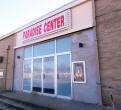 |
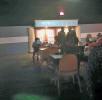 |
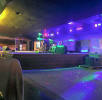 |
| |
2016 Poster |
Paradise Center 2016 |
Paradise today |
Paradise today |
|
|
|
|
An early preview, before the building formally
opened:
"... It started with the parking attendants directing
you to park. Security inside the building. Hot food can be bought
and the waiters and waitresses come to take your order. They have
attendants in the restrooms, clean and dry floors. You must go there
to see for yourself, You will be amazed at the upgrades, I was.
Waiting on the next performance there. |
|
|
|
|
|
|
|
|
|
|
| CLUB
TROPICANA... 1331 Thomas |
|
|
|
 |
The Tropicana brick building dates from 1951 although an
earlier frame building held the club prior to that.
Johnnie Currie owned the club from 1946 to the 1970s, with the
exception of those five years when he ran the Hippodrome on
Beale. The Tropicana building still exists, but is not
currently in use. |
|
Tropicana |
|
|
|
|
 |
 |
|
 |
 |
|
Tropicana |
Ttropicana |
|
Poster |
Interior |
|
| |
|
|
|
|
|
|
|
|
|
|
|
|
|
|
|
|
|
|
|
|
|
|
|
|
|
|
|
|
|
|
|
|
|
|
|
|
|
|
|
|
|
Credits |
|
|
|
The
Historic-Memphis website does not intentionally post copyrighted
photos and material without permission or credit.
On
occasion a "non-credited" photo might possibly be posted because we
were unable to find a name to give credit. Because of the nature of
our non-commercial, non-profit, educational website, we strongly
believe that these photos would be considered "Fair Use. We have
certainly made no monetary gain, although those using this website
for historic or Genealogy research have certainly profited. If by
chance,
we have posted your copyrighted photo, please contact us, and we'll
remove it immediately, or we'll add your credit if that's your
choice. In the past, we have found that many photographers
volunteer to have their works included on these pages and we'll
also do that if you contact us with a photo that fits a particular
page. |
|
|
|
The "Historic-Memphis" website would like to acknowledge and thank the
following for their contributions which helped make this website
possible:
Memphis
Public Library, Memphis University Library, Memphis Law Library,
Memphis Commercial Appeal, Memphis Press Scimitar, Shelby County
Register of Deeds, Memphis City Schools, Memphis Business Men's
Club, Memphis Chamber of Commerce, Memphis City Park Commission,
Memphis Film Commission, Carnival Memphis, Memphis Historical
Railroad Page, Memphis Heritage Inc, Beale Street Historic District,
Cobblestone Historic District, Memphis Historic Districts, Vance
Lauderdale Family Archives, Tennessee State Archives, Library of
Congress, Kemmons Wilson Family, Richard S. Brashier, Lee Askew,
George Whitworth, Woody Savage and many individuals whose assistance is
acknowledged on the pages of their contributions. Special
thanks to Memphis Realtor, Joe Spake, for giving us carte blanche
access to his outstanding collection of contemporary Memphis photos.
We do not have high definition copies of the photos on these
pages. If anyone wishes to secure high definition photos,
you'll have to contact the photographer or the collector.
(To avoid any possibility of contributing to SPAM, we do not
maintain a file of email addresses for anyone who contacts us). |
|
|
|
|
|
|
|
|
<><><><><> |
|
|
|
|
|
|